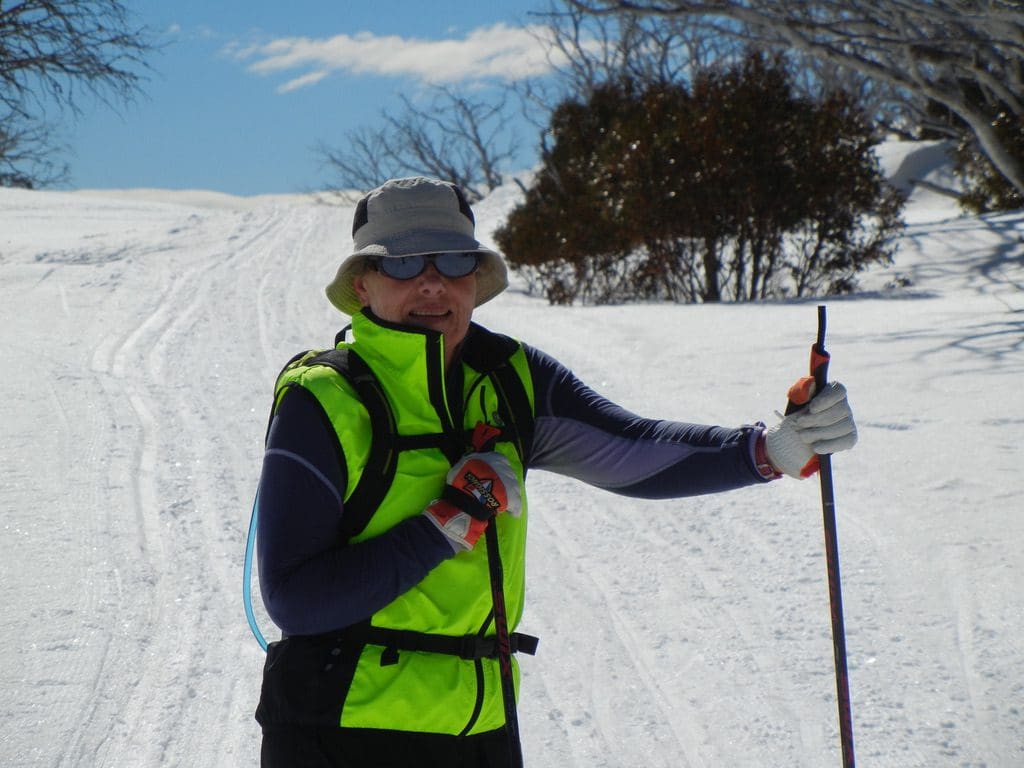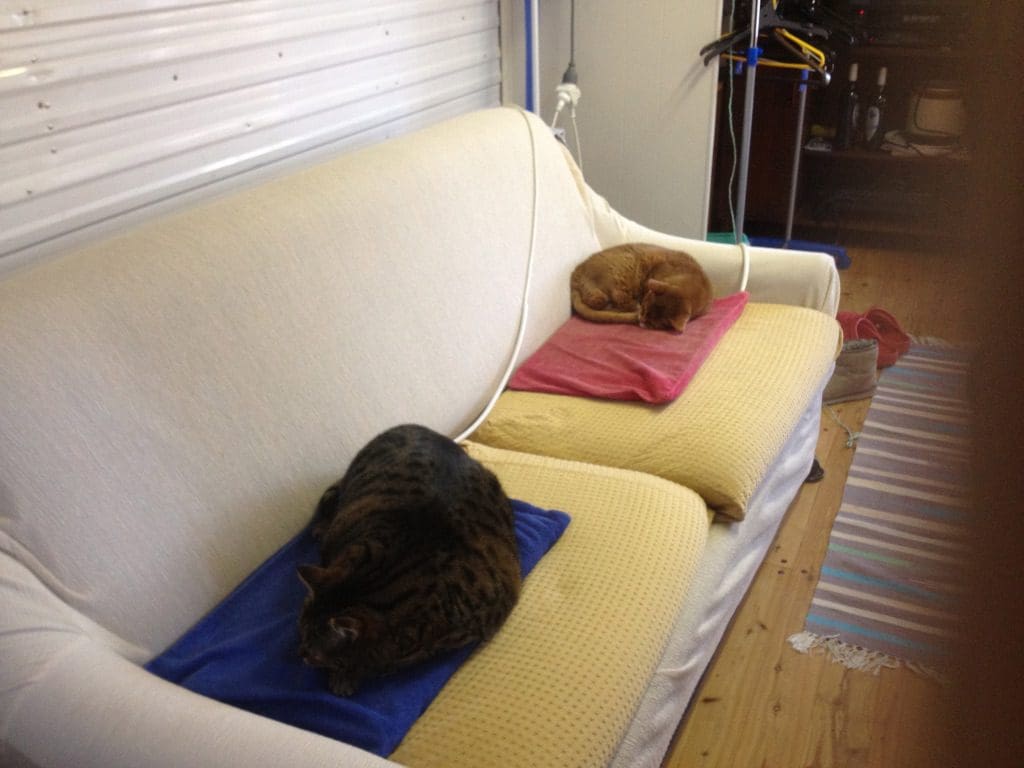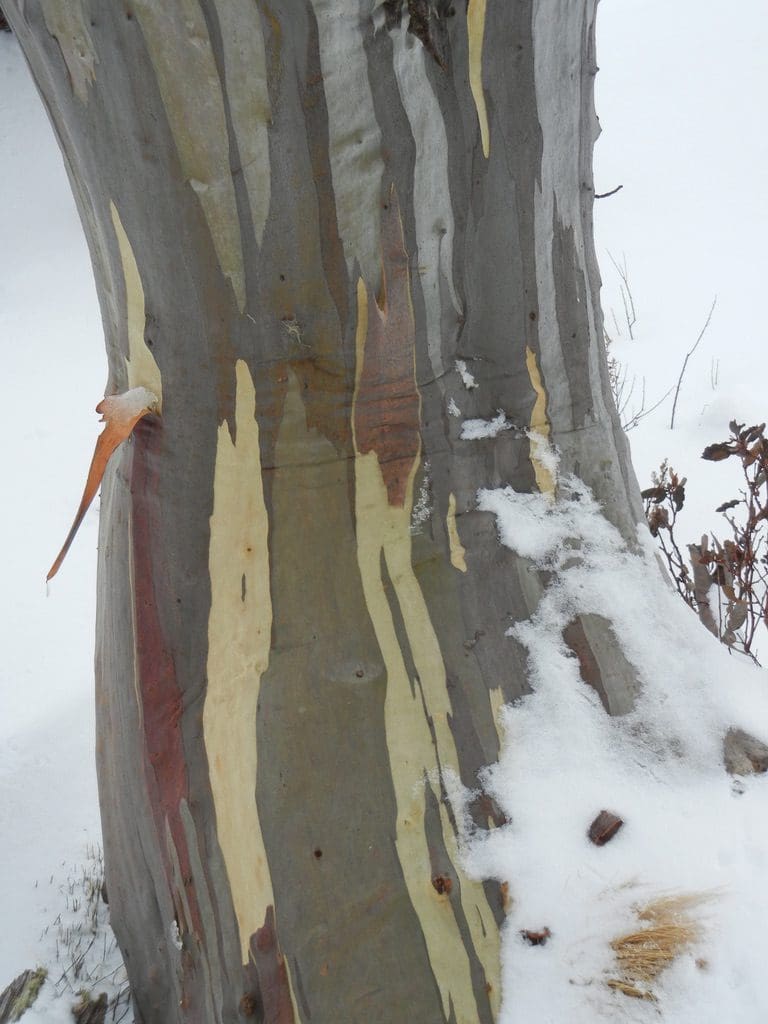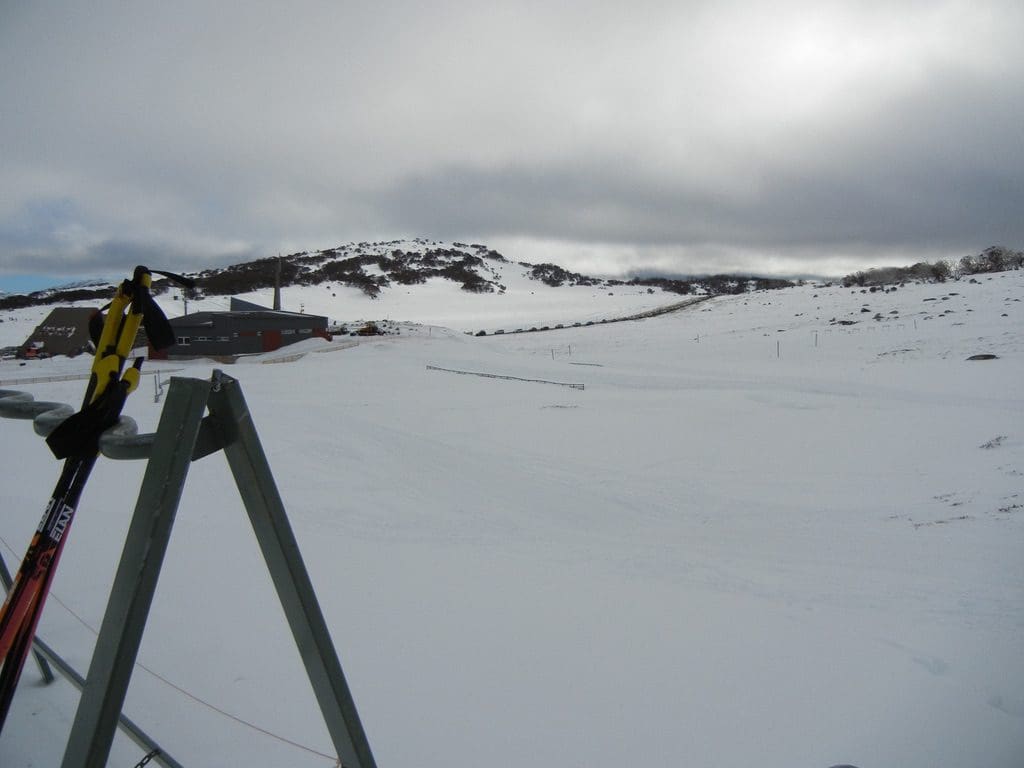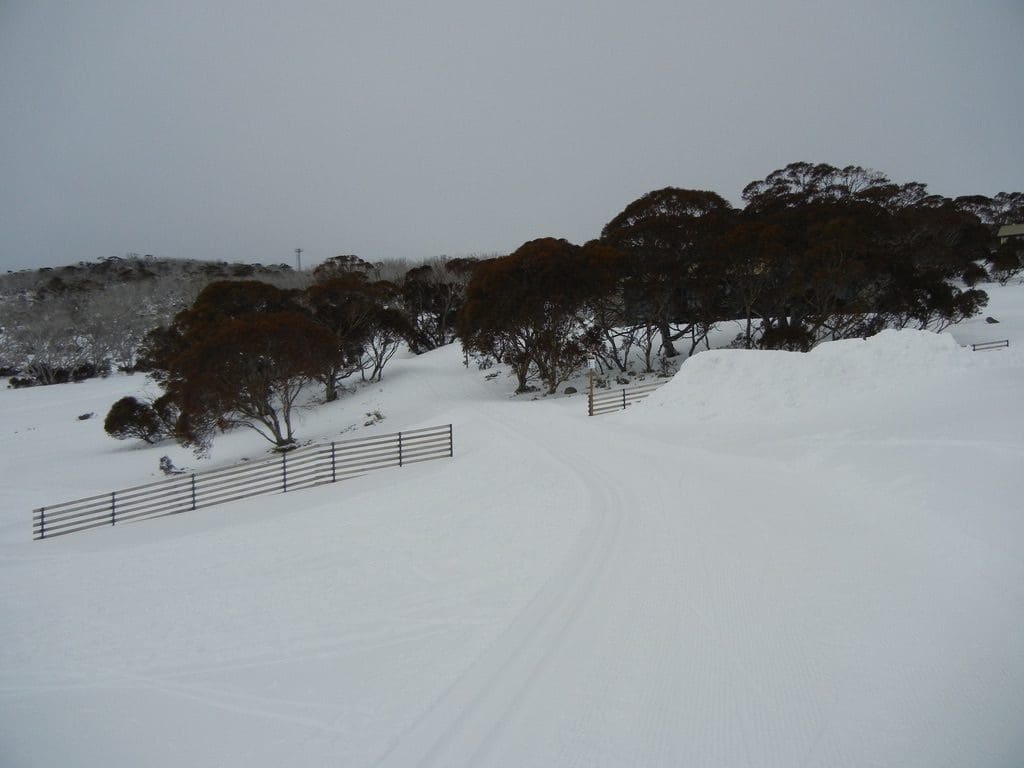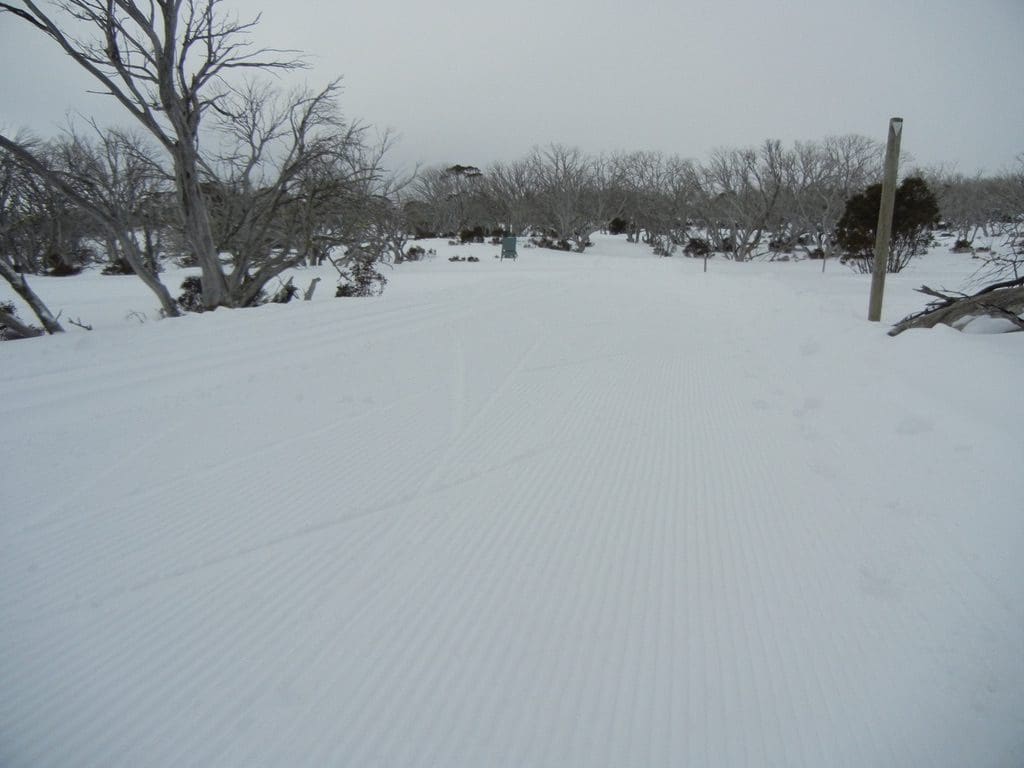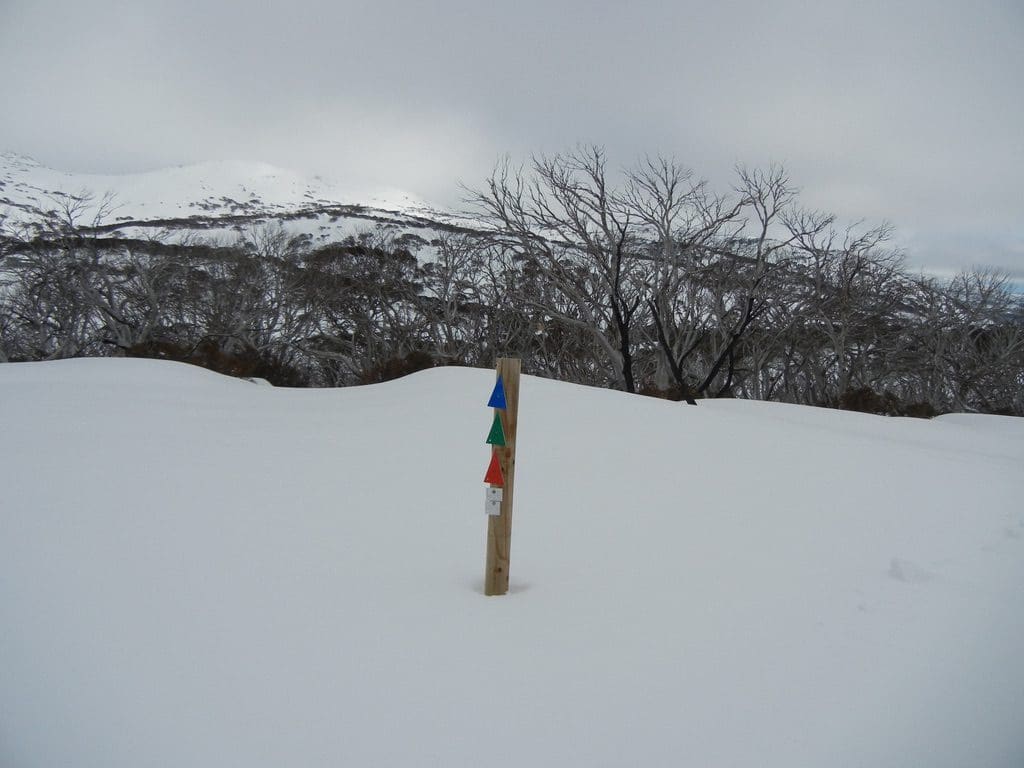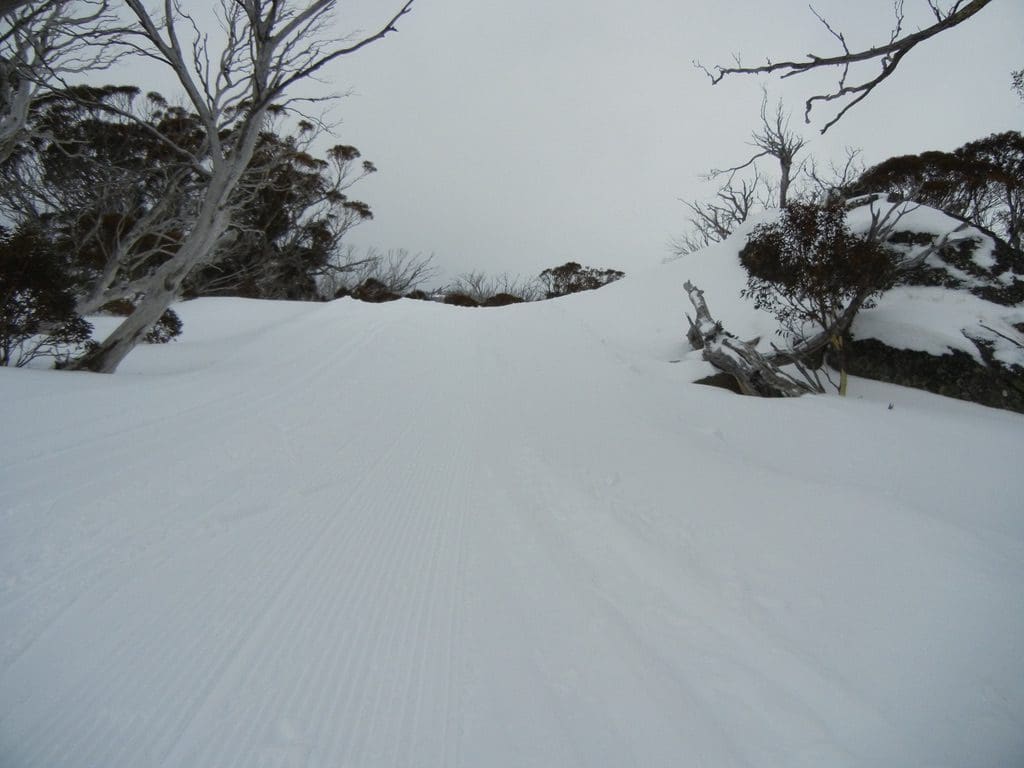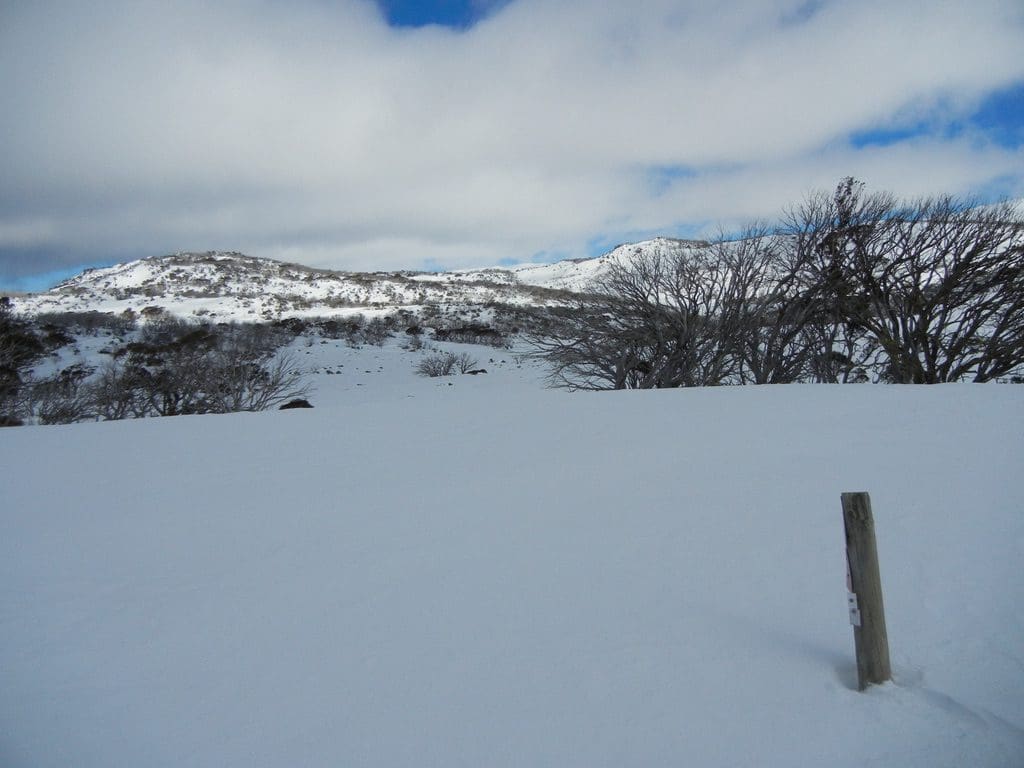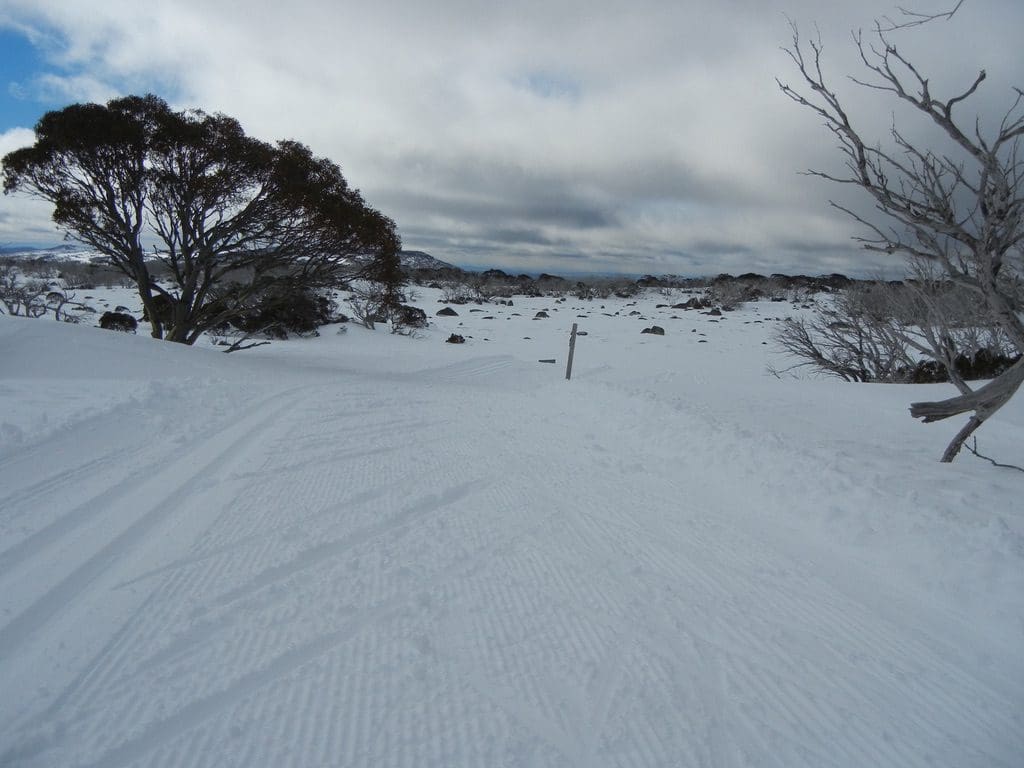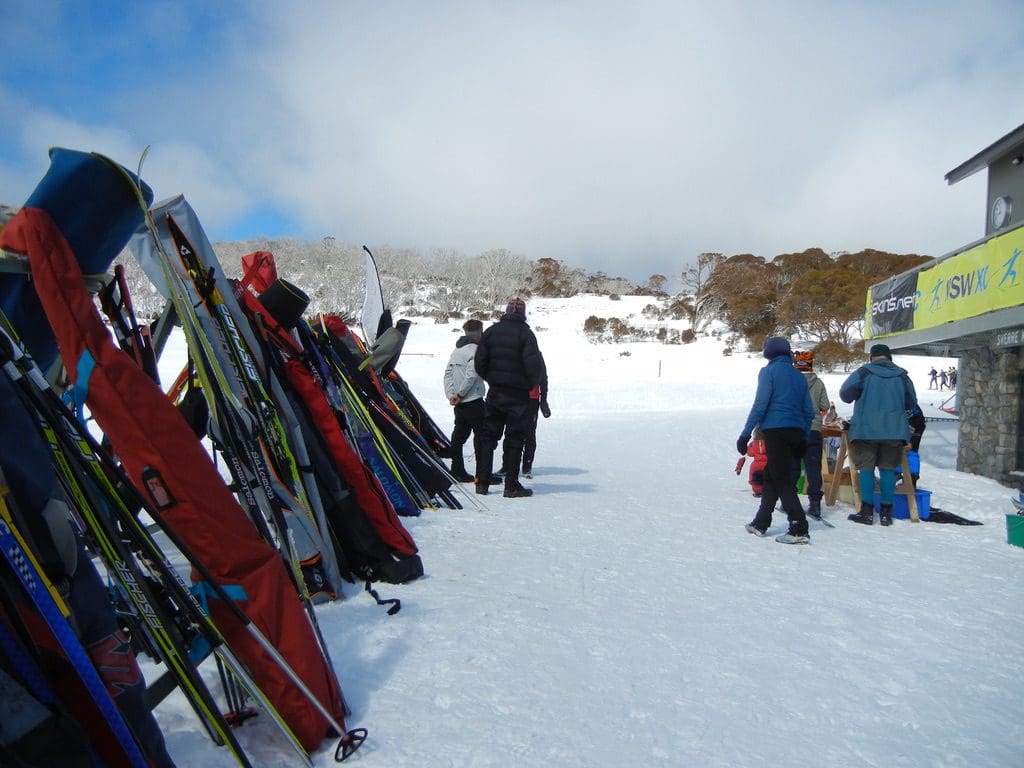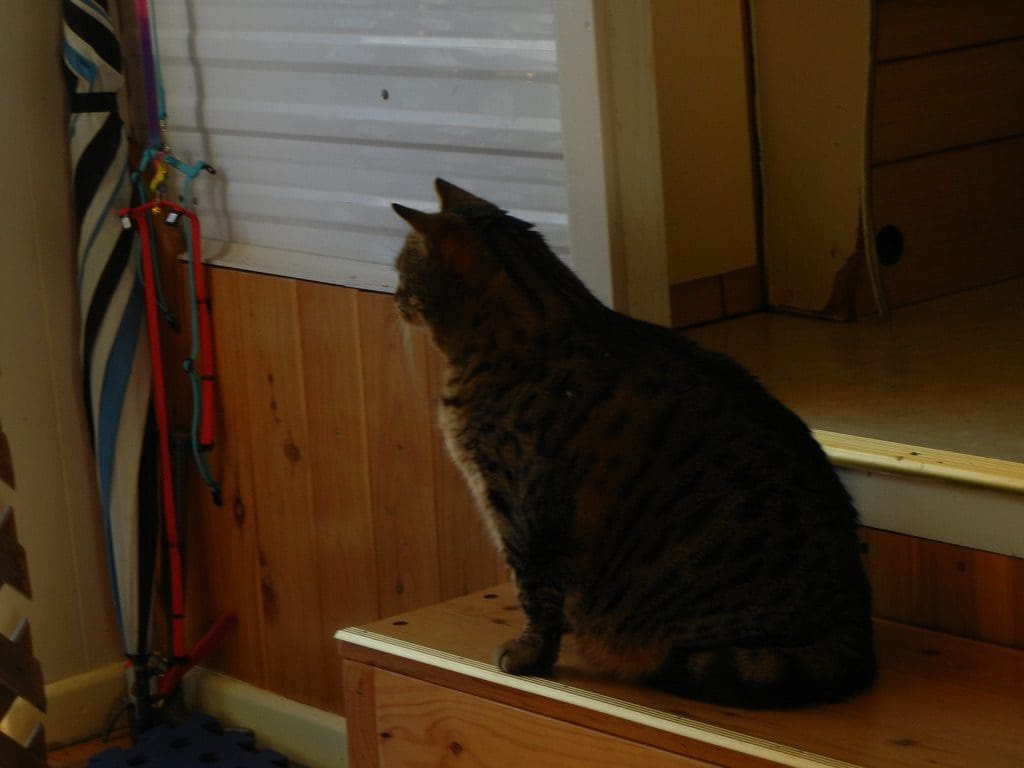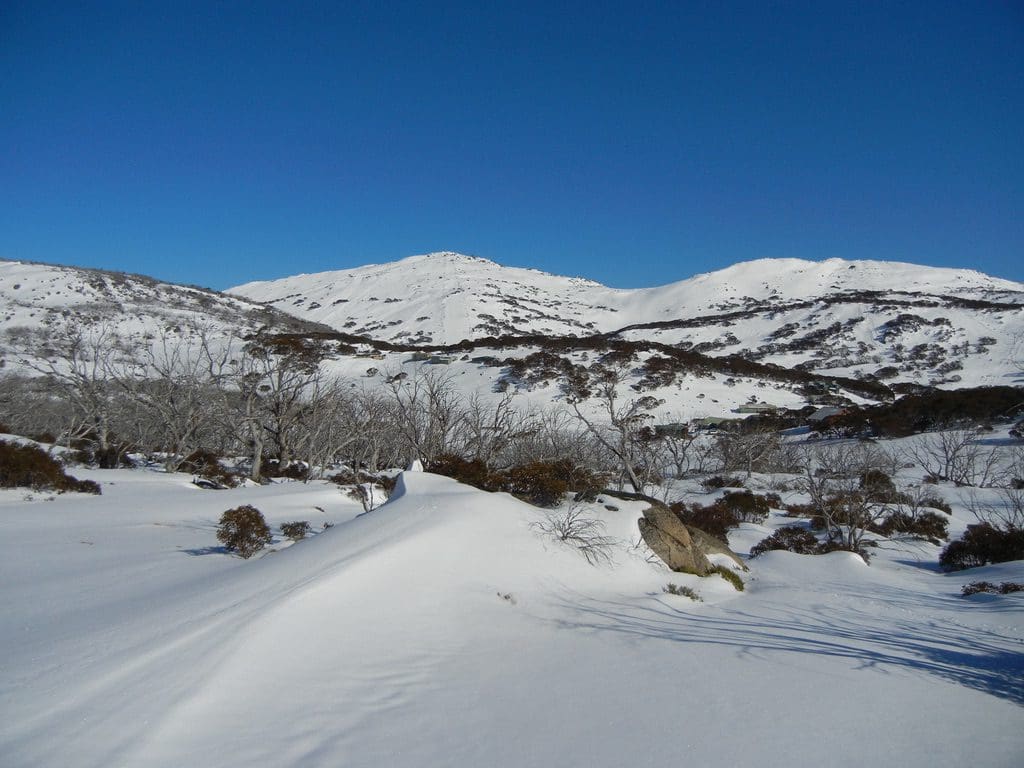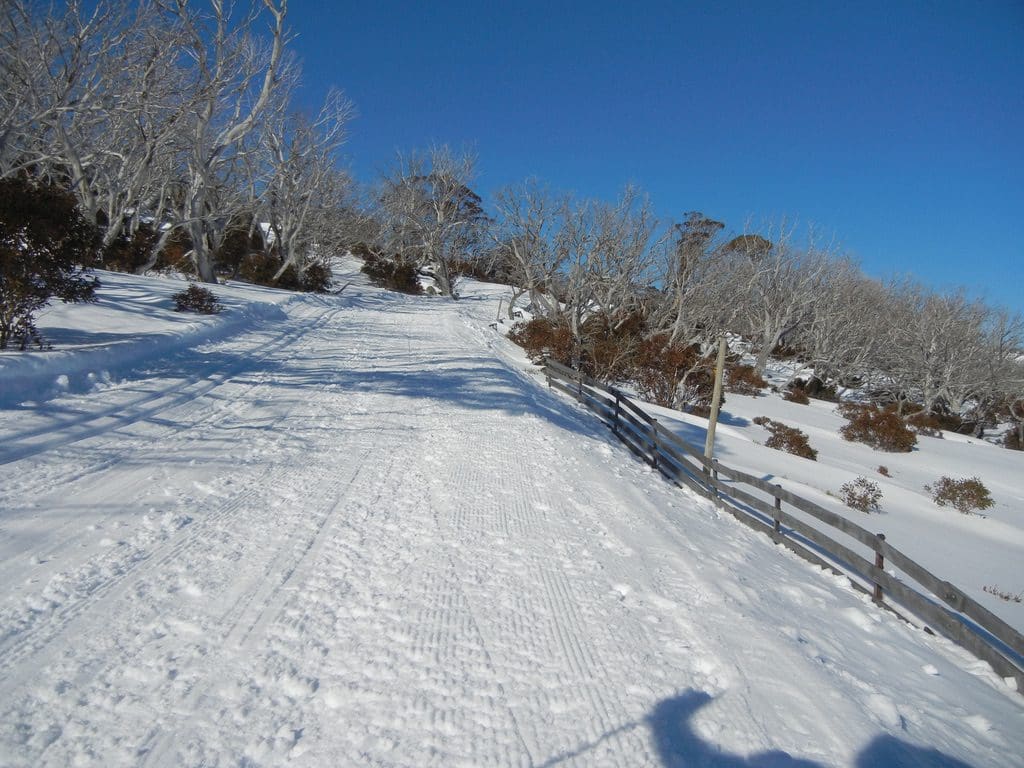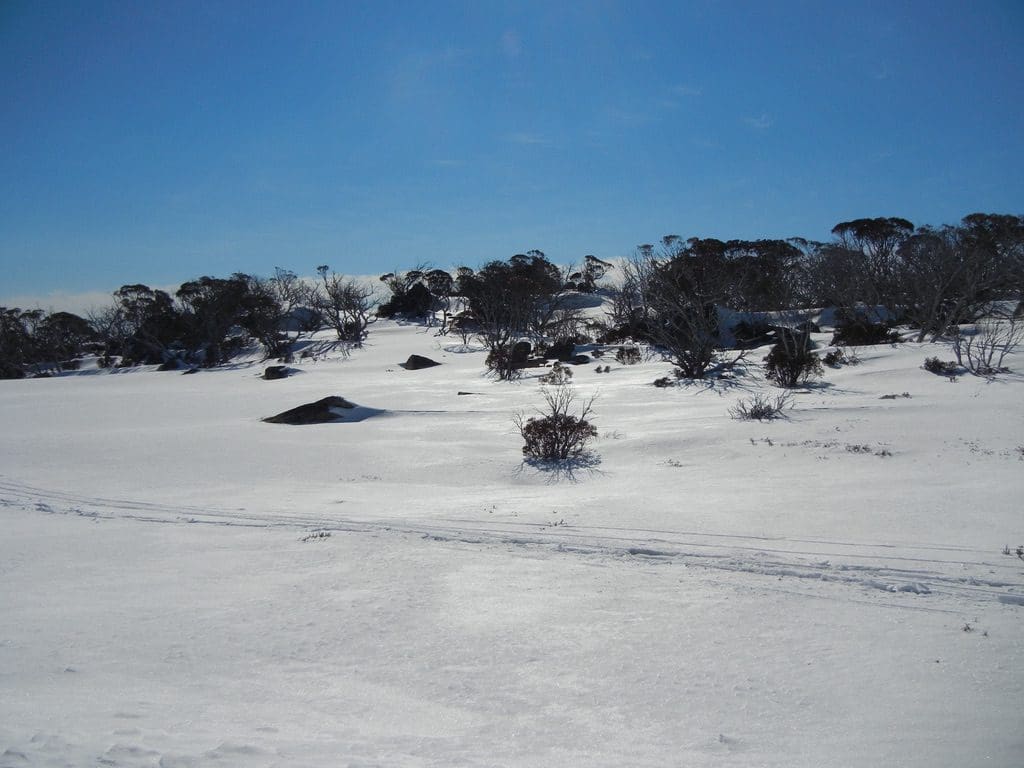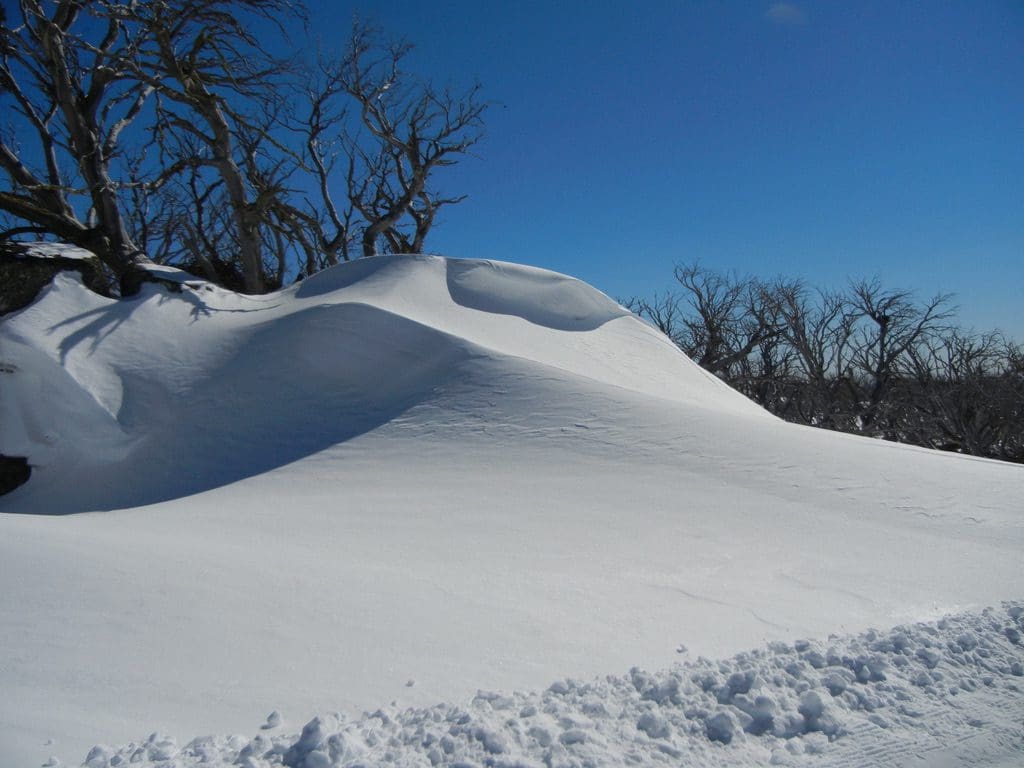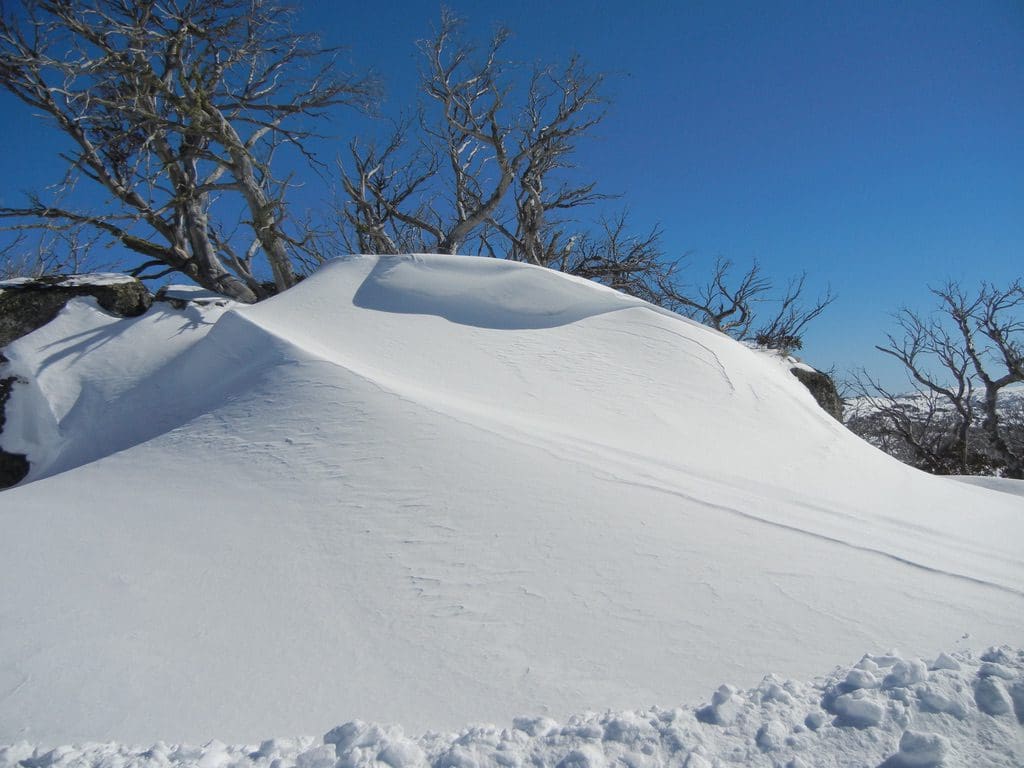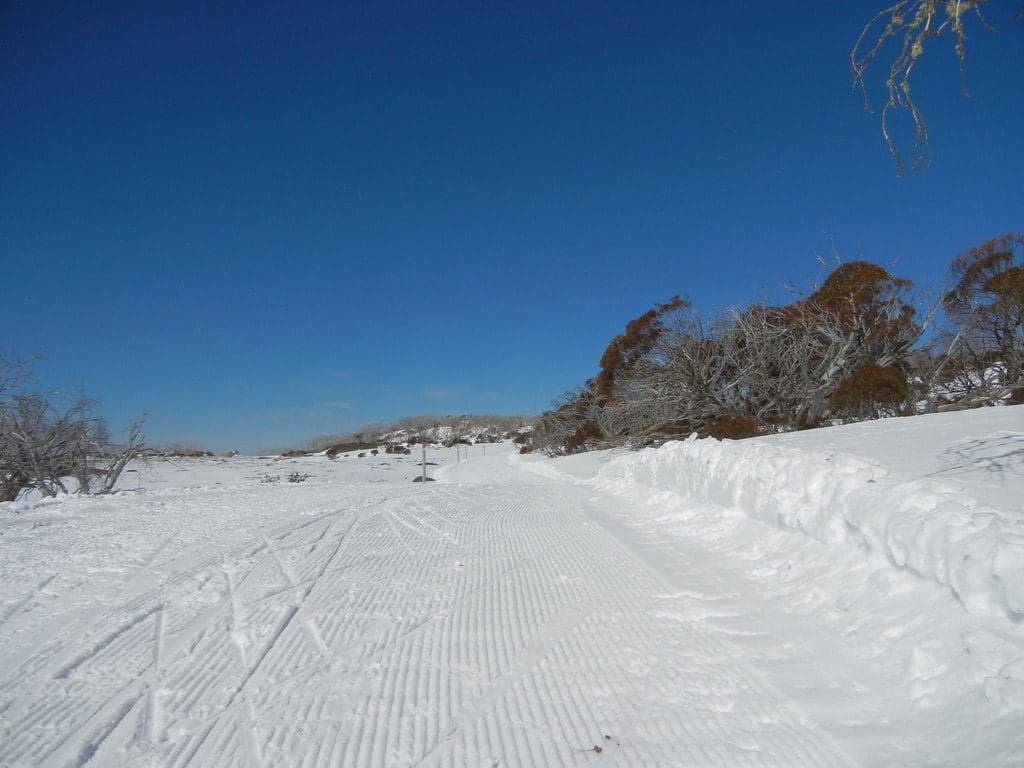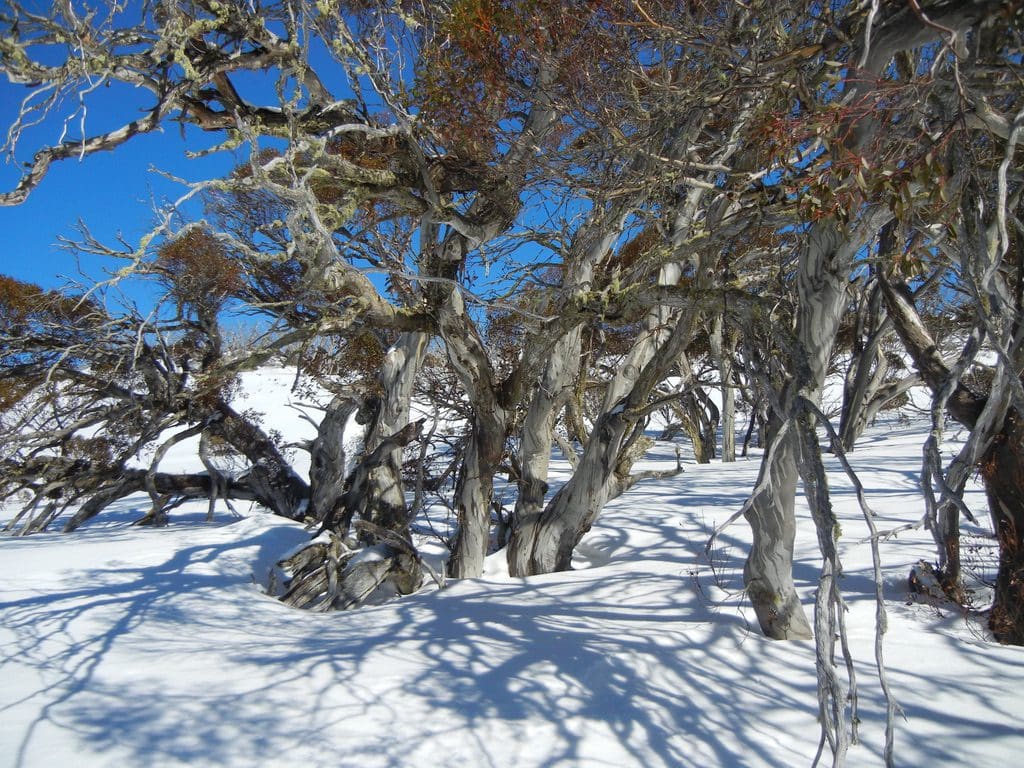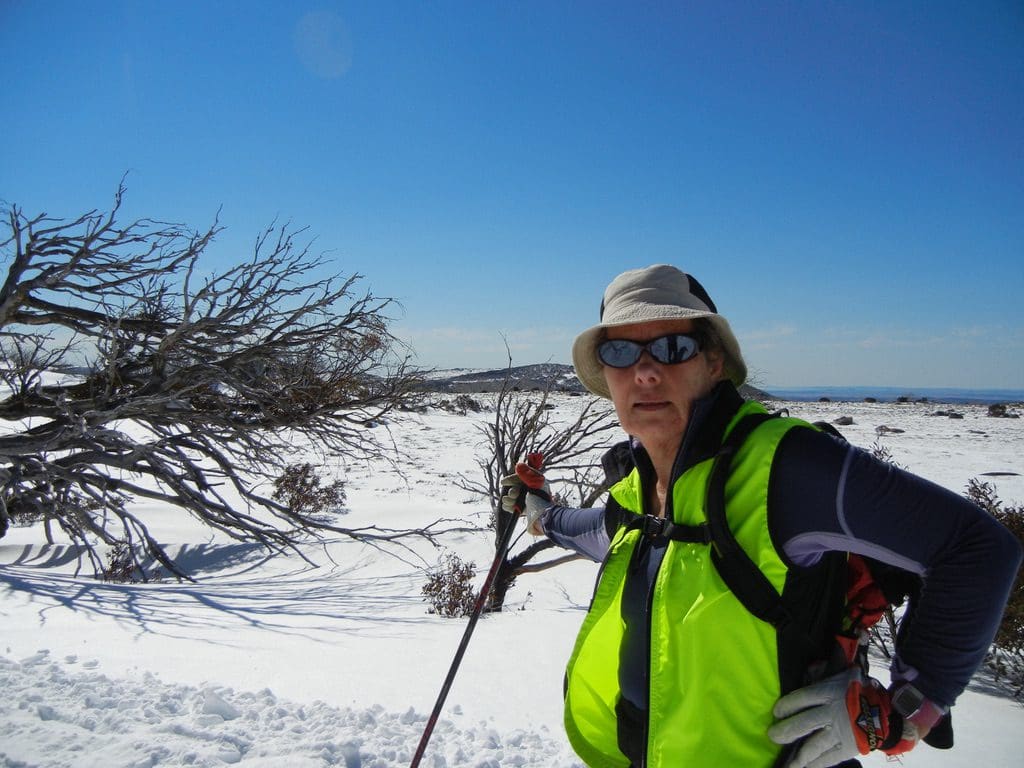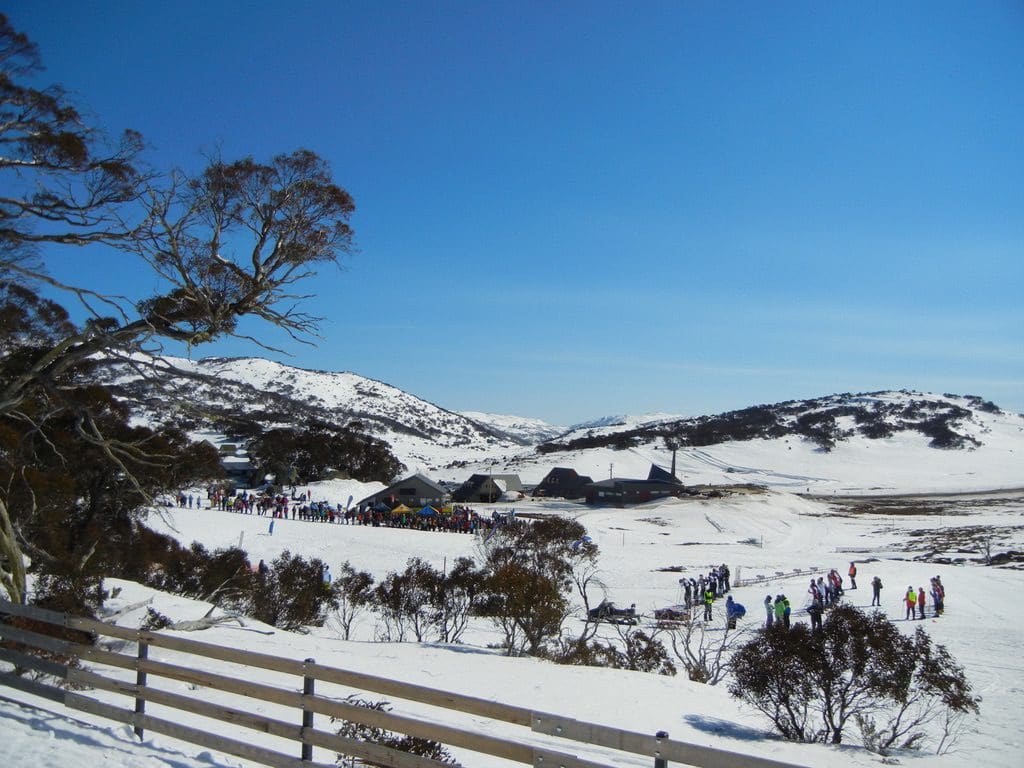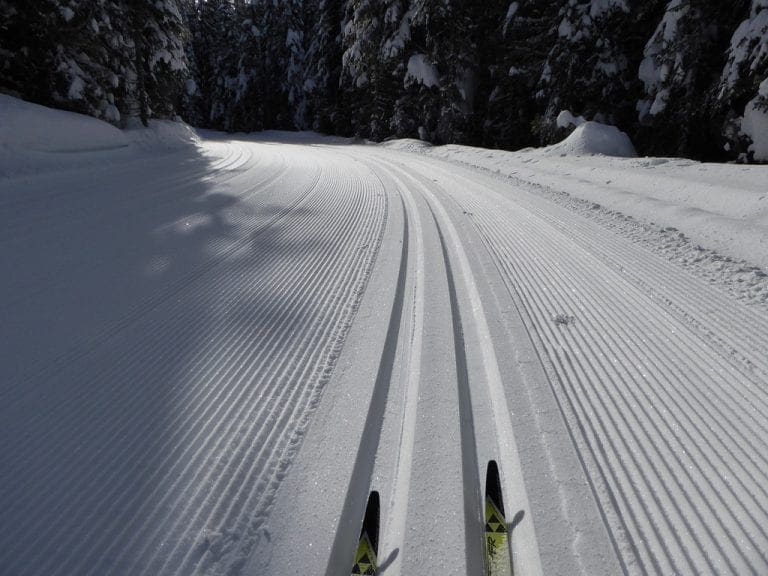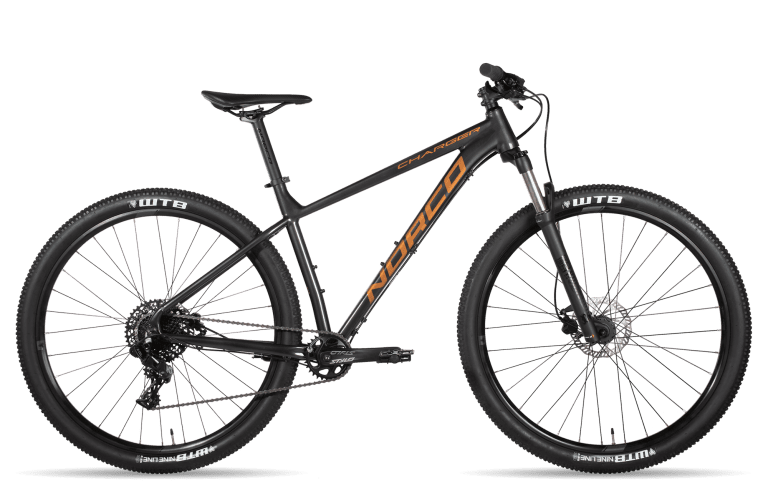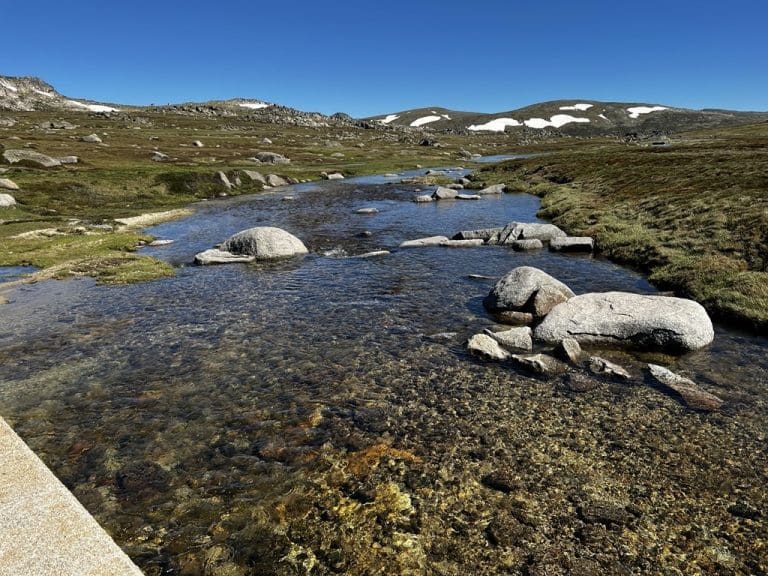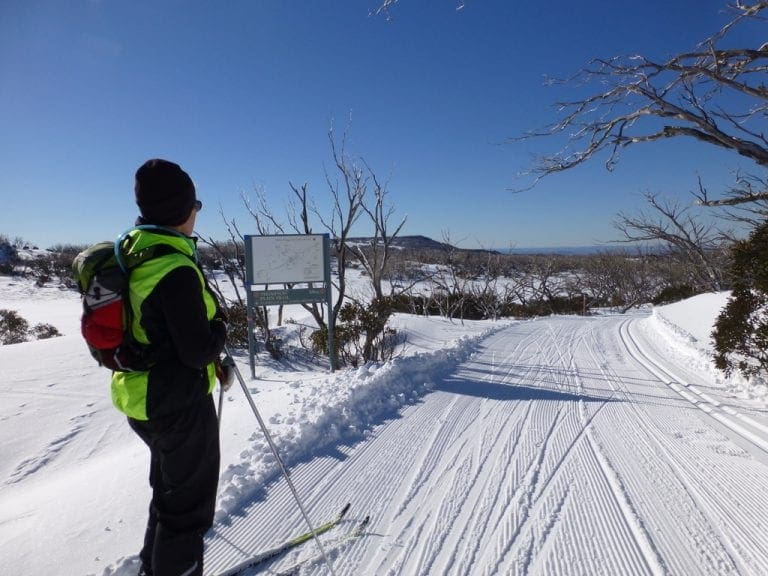Jindabyne September 2012
Day 9 Friday 31 August. A definite day off. We drove up the hill in a heavy snow fall just for a look. A very good fall of snow. Had a wander around the Perisher Terminal (which we had not seen for a year plus) and then back to Jindabyne to do a bit of shopping. I spent a bit of time cooking up a curry for the next few days of lunches. It snowed several times during the day down to this level. I have to report that cats do not like snow falling on them. Most put out. I’ve chosen this photo because it shows snow falling as well as the very high level of the lake in the background. The boat hire is stranded and the Williamson Fishing Boat has had to find a makeshift jetty. This is the view from our back window. We camped at the base of that pine tree in the centre 10 weekends a season for about 25 years before we bought this van. (According to our neighbour, early in the year, the water level was much higher again. He had his boat tied to the back of our van. A ruler length higher and van would have been wet.)
The photo is of the end of today’s KCOS 18km race. You can clearly see the two styles. The bloke in front is skiing ‘classic’ style where the skies run parallel to each other – often/usually in grooves/tracks. The bloke behind is skiing ‘skating’ – the skies run out at about 45 degrees and need a groomed, flat track as wide as a road. For many years, we skied ‘classic’ (without the heel lift this bloke has achieved). We are now trying to master skating.
In today’s race, the classic skies started 10 minutes in front of the skaters. They finished together. Skating is slightly faster, needs more sustained effort, looks more graceful, needs more skill even at entry level and is more fun. We skated the 10km track which was groomed today for the first time in weeks. It had very nice, soft, creamy snow. All other tracks, showed the effect of their traffic over the last few days, the warm afternoon yesterday and the cold night. They were icy and difficult to skate on. But, we did it. All 10 kms, no short cuts. A bit buggered.
Day 12 Monday 3 September. A day off after the exhaustion of yesterday. Cleaning and fixing things around the van. Us watching cats watching ducks.
Day 13 Tuesday 4 September. A beautiful warm sunny day. We skated the 7.5km track (anti-clockwise, all of it – no shortcuts). The 5km part of the track was very busy and worn with kids preparing for their big race tomorrow. Watching some to the coaching, we need to really work on stepping out with the leading foot. Like walking up stairs.
Skiing in underwear and a hat. You can usually tell what the weather is like by Helen’s clothes. Big jacket = cold and windy. Sun hat and yellow vest = warm and sunny.
We’ve changed the way we are using our heart-rate monitors. After each 20 skates, I wait until my heart rate drops to about 125 BPM. That means I am working in the range 125 to 150 BPM. It makes it a bit easier. Of course, if we were 40 years younger, that 150 BPM would be in my zone 1 and I could do it all day. Now, at 64, it is close to my red line.
A bit on the Nissan Xtrail. I am very impressed. It handles all that the snowy icy road can throw at it and is very easy to handle. For our trips up and down the mountain, it is actually getting the same fuel consumption as on the freeway. (Compare that with our old Subaru Forester which had terrible fuel consumption in the mountains.)
Day 14 Wednesday 5 September. Extremely windy. Waves and water spouts on the lake. We had a chat with our neighbour, Joseph, who was in a MacPac Olympus tent and is cycling. He usually has his dog Zeus in a kennel that he pulls behind the bike. He is heading up to do some snow camping and Zeus (and kennel) has been left behind for a few days. Joseph has a lot of high tech equipment to make things lighter. He also does ‘biro art’. An example is to the left. Quite beautiful. Influence of Esher? Photos of bike and Zeus here. A very interesting young fellow. (He had gone by the we got back, so we did not see him again.)
We did go up and skated almost to the top of the 5km track. I cannot remember a more windy day. Extremely difficult to stand upright let alone skate! Going up was ok – wind-powered. Coming down we had to skate a strongly as though we were climbing a very steep slope. At least 100km/hour at the top of the 5 km track. A bit scary with all the debris falling from trees.
Today was the Australian Interschool Cross Country championship. Very crowded in and around the Nordic Shelter. No one out on the tracks. Too windy. Very windy back in Jindabyne. Waves and water spouts on the lake. Branches ripped off trees. The little tree just below us was blown over. Neeka was a very frighten cat hiding under the bed when we returned. About the strongest wind that I remember in the van park. Street signs and the 40 km/hr school sign blown down.
Day 15 Thursday 6 September. A beautiful sunny day in Jindabyne (although quite windy again). We did drive up the hill to Perisher. Rain from Saw Pit Creek and heavy rain in Perisher. As I’ve said before, there is no way to tell from Jindabyne what the weather will be on the hill. I can’t even tell what the conditions will be like on the track from the Perisher carpark, 200 metres away.
I am not hopeful that the snow cover will survive much rain. The warm wind yesterday had already taken much snow. Before yesterday, there was no skiable snow below Smiggins. We will go home tomorrow. We’ve had excellent conditions for our couple of weeks. Very lucky to have fitted it in.
A few words on what I have learned about skating:
- Stand upright – shoulder blades down, bum pointing at boots (not ends of skis)
- Skate as though walking in a straight line – at the speed of a catafalque party – bring heels together balanced on one leg and step the free leg straight forward.
- On steeper slopes, it is like walking up stairs – maybe two at a time. Walk forward as much as possible.
- Get as much glide out of each skate as possible – don’t rush it.
Day 16 Friday 7 September. We drove back to Sydney. It was extremely windy with rain and hail on the way, so we did not tarry much. 5 3/4 hours for the trip. The Xtrail averaged 9.42 litres per 100 km for the drive. Neeka traveled in her cage and Zazu on the passenger’s lap. Just one event. We did not stop quickly enough when Zazu began to show a little discomfort and I ended up with a lap of warm Zazu piss. ‘The moral of the story is very plain to see, stop the car quickly when Zazu wants a pee.’
All pix taken with my Nikon Coolpix S8100.
PS. The day we left, there was a huge snowfall which closed the tracks for three days. This is what they woke up to on Monday. A day of digging out – tracks, doorways, steps. No wonder it was windy. What a great snow fall!! Now I am jealous and want to go back.
